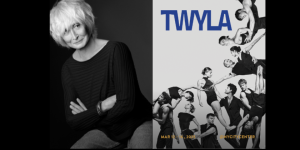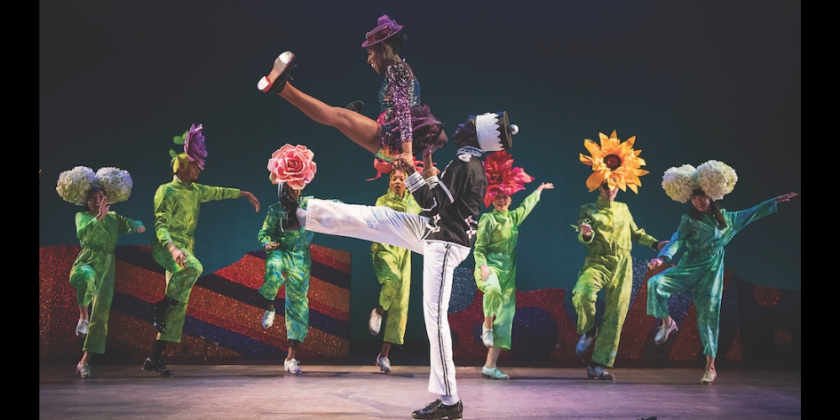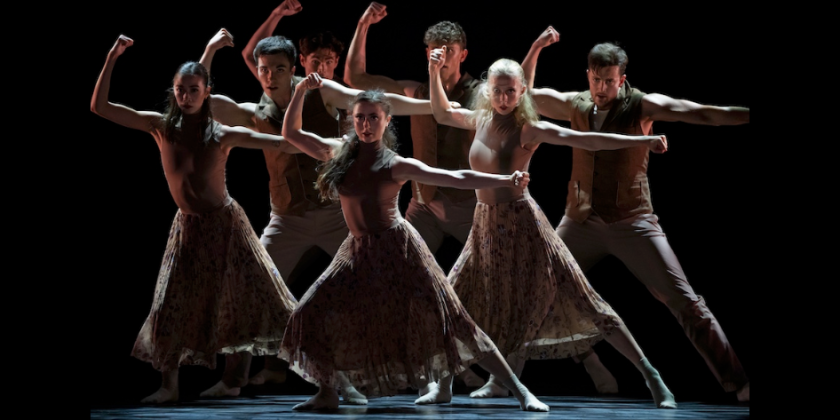IMPRESSIONS: Twyla Tharp Dance's Diamond Jubilee at New York City Center

Choreographer: Twyla Tharp
Dancers: Renan Cerdeiro, Angela Falk, Miriam Gittens, Zachary Gonder, Oliver Greene-Cramer, Kyle Halford, Daisy Jacobson, Marzia Memoli, Nicole Ashley Morris, Alexander Peters, Molly Rumble, Reed Tankersley
Pianist: Vladimir Rumyantsev
Third Coast Percussion members: David Skidmore, Sean Connors Robert Dillon, Peter Martin
Flutist: Constance Volk
Dates: March 12 - 16, 2025
The cover of the program booklet reads TWYLA, and shows twelve dancers in heterosexual pairings. Twyla Tharp celebrates her Diamond Jubilee, 60 years of dancemaking, at New York City Center and presents two New York premieres. The interesting caveat about these NY premieres happens to be that one of the works is actually from 1998, while the other came out this year.
Diabelli, the older work, a piece to Ludwig van Beethoven's “Veränderungen

Marzia Memoli, Oliver Greene-Cramer, Daisy Jacobson, Miriam Gittens, Renan Cerdeiro and Nicole Morris in DIABELLI. Photo: Christopher Duggan
Tackling a Beethoven masterwork not only defies choreographer Geor
Tharp knows how to develop and manipulate a theme masterfully, however, and her ten dancers move with ease meeting all challenges joyfully. Her Diabelli offers a choreographic lesson that incorporates Tharp’s brand of showmanship and a kind of gentle humor that she must have imported from her early days with choreographer Paul Taylor. Pianist Vladimir Rumya

Kyle Halford, Oliver Greene-Cramer, Renan Cerdeiro, Alexander Peters and Reed Tankersley of Twyla Tharp Dance in DIABELLI. Photo: Christopher Duggan
Geoffrey Beene’s black,
They are definitely a throwback to the Tharpian Americana of yesteryear. Just when Tharp’s allusions to Vaudeville get tiresome, she pulls out of her hat a couple of pas de deux that take me on an emotional journey. That all partnering concentrates on heterosexual pairings — except the ones with a humorous intention — contributes further to the work looking older than its premiere date.

Twyla Tharp Dance in DIABELLI. Photo: Christopher Duggan
This year’s SLACKTIDE puts all twelve dancers in the spotlight to Philip Glass's composition "Águas da A

I am dancing in my seat (and later on in the streets), as one dancer accelerates a human carousel by giving a colleague a push. Does Tharp make a conscious reference to choreographer Agnes De Mille (the original choreographer of the Broadway musical Carousel) or is she just being Tharp, a choreographer informed by the history of American dance? The dynamic range in SLACKTIDE fills me with awe and wonderment. Individual recklessness electrifies but never endangers the group, because the patterns are meticulously planned. My kinetic light is turned on, and the dancer in me wants to join the fantastic movers on stage. I forget to take notes, but vicariously embark on a physical flight of fancy. The delightful suspensions that Zachary Gonder relishes in his rotations with widespread wings excite me as much as Marzia Memoli’s attack and release. I have to force myself to look at the whole picture, rather than be swept away by Kyle Halford’s gorgeous fluidity, but thankfully all the dancers offer special qualities that I rejoice in. Tharp makes Reed Tankersley her Neptune, the god of the sea, who stirs up the slack water and brings it to a boil.

In addition to the artists mentioned, all of the dancers deserve applause: Renan Cerdeiro, Angela Falk, Miriam Gittens, Oliver Greene-Cramer, Daisy Jacobson, Nicole Ashley Morris, Alexander Peters, and Molly Rumble. Costumes in twelve inventive variations on black by Victoria Bek help Tharp’s SLACKTIDE look contemporary, but I have the feeling that this particular Tharp masterwork will remain timeless.
















